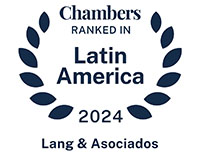According to the Costa Rican Commercial Code, the structure and procedure legally established and required for the acquisition of a commercial/business establishment is the “Compraventa de Establecimiento Mercantil” (“Sale and Purchase of a Mercantile Establishment”) provided by such Code. It is important to follow said procedure when acquiring an already established and operational local business, since it provides a substantial level of risk mitigation.
Such procedure allows for the acquisition of a business (or part of it) and its components, such as: clients, know-how, business notoriety, business operation and/or organization, furniture, merchandise/products, inventories, patents of invention and trademarks, accounting including complete business files, industrial designs and models, distinctions and other rights derived from commercial, industrial or artistic property. The sale of a commercial or industrial establishment includes all its elements, and everything that makes up the assets and debts of it, unless expressly agreed otherwise.
In order to proceed with the sale and transfer of the commercial establishment, a transfer deed has to be granted before a Costa Rican Public Notary and it must be signed by the duly appointed representatives (and depending on each case, also by the seller’s shareholders) for the seller and the buyer. As part of the formalities required for such deed, it has to be entered in Spanish and it will also require the publication of a legal notice in the official government newspaper “La Gaceta” informing any creditors or interested third parties about the business acquisition. Applicable law and regulations provide for a 15-day term, counted from the date of the first publication of the notice, for any of such creditors or interested third parties to claim their rights over the business. If there is any claim, it will be covered from the paid purchase price for the acquisition of the commercial establishment.
For the reasons and purposes indicated above, the transfer deed will also indicate who will be the depositary of paid purchase price. This means that such payment is not delivered to the buyer upon the execution of the transfer deed, but it is rather transferred to the seller upon completion of the legal term of 15 days indicated above (or its remainder, if there are creditors to satisfy within the above indicated notice term).
According to Section488 of the Commercial Code, any purchase of a commercial establishment that does not complete and follow the above indicated requirements and procedures, will be null before third parties (such as the seller’s creditors) and any payment made by the buyer for such acquisition is not legally valid. This means that if this acquisition procedure is not duly followed, then the seller’s creditors may claim all the seller’s debts to the buyer, since the transaction was not provided with the legal publicity required for deal, and with the corresponding legal term to claim their rights as creditors.
Per the above indicated, the procedure for the acquisition of a commercial establishment as established in the Commercial Code is not only legally mandatory, but it also has very important advantages for the buyer, as follows:
1. Risk Reduction: It provides a significant reduction of the risk of having third parties’/creditors’ claims after the transfer of the commercial establishment.
2. Legal Certainty: The procedure outlined in the Commercial Code ensures that the transaction is conducted in accordance with the law, providing legal certainty to both the buyer and the seller. This includes requirements such as drafting and executing a formal public deed before a Public Notary.
3. Transfer of Assets and Continuity of Operations: Acquiring a commercial establishment involves the transfer of the listed assets (such as inventory, furniture, and equipment). This allows the buyer to continue operations without starting from scratch, leveraging existing clients, business’s reputation, existing supplier relationships, and an organizational structure. This facilitates operational continuity of the business.
4. Possibility of having other supporting documentation: The public deed to be signed by the parties is not the only document/contract that could be signed by the parties as part of the transaction. Other supporting documentation can be executed such as an “Asset Purchase Agreement”, which could have all the required details and specifics for the transaction, and it could be drafted and signed in English, if required, as long as both signatories are knowledgeable of and speak English. The Asset Purchase Agreement will also be mentioned and referred to on the transfer public deed, so both documents will be linked and associated to each other.
Tags: #acquisitionofbusinesscostarica, #costaricalawfirm, #m&acostarica


.jpg)




